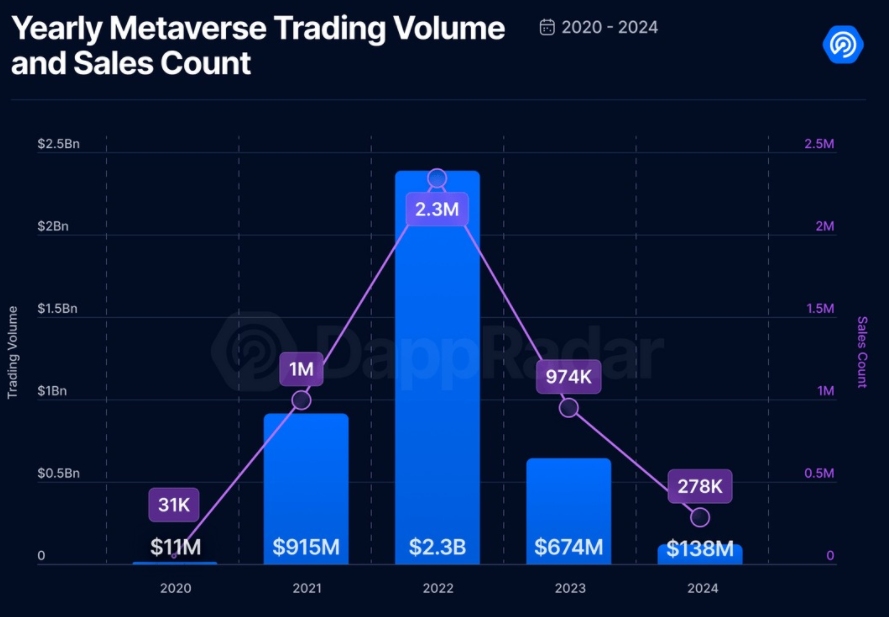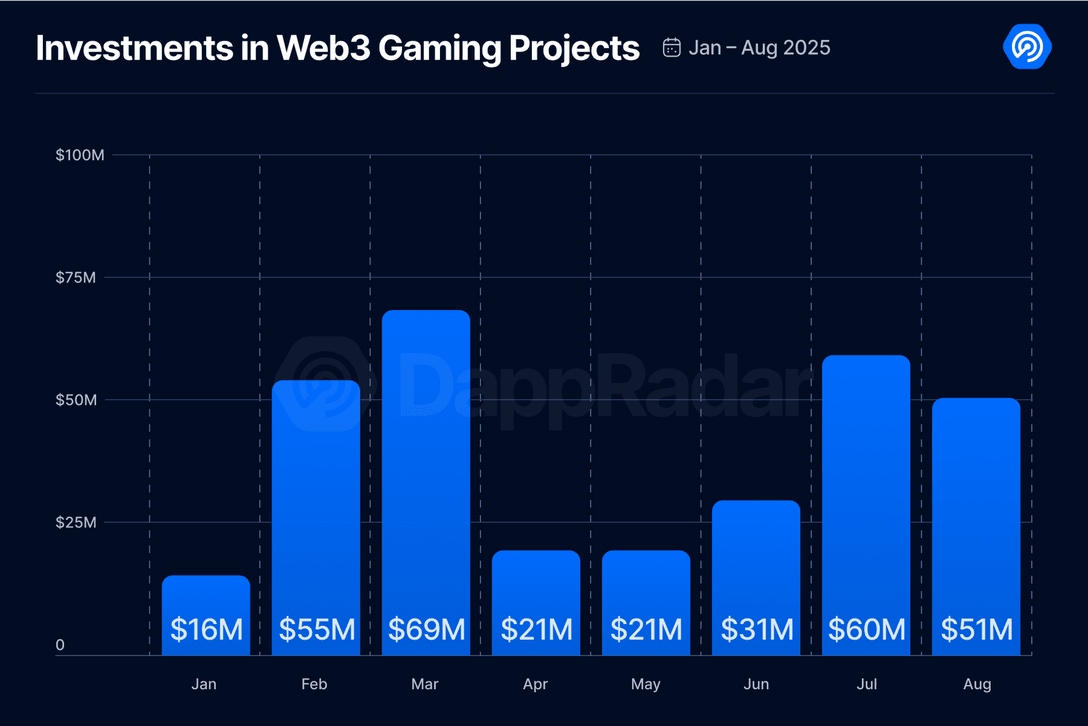- The metaverse represents the next evolution of the internet, merging virtual identity, assets, and commerce into real economies beyond gaming.
- Leading platforms include Decentraland (MANA), The Sandbox (SAND), Roblox, Fortnite, and new entrants like Otherside, with tokens at the centre of ecosystem value.
- Success factors include strong adoption, interoperability, robust creator economies, and real-world brand integrations; poor tokenomics and speculation often lead to failure.
- Risks include technological limitations, token volatility, land speculation, regulatory uncertainty, and intense competition—making the space high-risk yet potentially transformative.
TradingKey - The term “metaverse” was on the minds of everyone following Facebook’s 2021 rebranding as Meta, which announced its plan to build virtual, immersive environments. The hype cycle has since cooled down, but the idea behind it remains robust: a blending of virtual spaces in which customers work, play, and transact in always-on environments. Not a temporary trend, the metaverse is the future evolution of the internet, spatial interaction, ownership through virtual items, and decentralized economies.
It's challenging for investors to distinguish between short-term enthusiasm and long-term promise. There are dozens of platforms, projects, and tokens touted as “the future of the metaverse,” and few of these will survive. Determining the platforms that will last depends on the valuation of technology, adoption, and economic structure.
Why the Metaverse Matters
It’s more than gaming at its fundamentals, though. It's an environment where virtual assets, identity, and interaction converge. It includes virtual ownership of land, social spaces, and virtual commerce at an immersive level. However, the key here is the ability within these spaces to buy, sell, and transfer value, which makes these spaces real economies, rather than simply entertainment venues.
Its ramifications reach beyond business. Stores can sell goods in virtual malls. Musicians may stage their concerts in virtual arenas. Organizations may build training centers or virtual offices. Education, travel, and medicine also have applications. Just as the internet transformed business and communications, the metaverse aims to change experience itself.

Source: https://www.beincrypto.com
Leading Platforms
Two of the most advanced metaverse platforms available are Decentraland and The Sandbox. These use blockchain land ownership, allowing users to buy, create, and monetize virtual real estate. Decentraland was developed based on the principles of cultural and social experiences, and The Sandbox attracts brands and content creators through gamified experiences. Their own tokens, MANA and SAND, serve as transactional currencies.
Roblox, although not blockchain-based, remains arguably the most successful metaverse-like platform, considering its enormous audience and creator-driven economy, which employs a scale-adoption model. Epic's Fortnite does the same, blurring the lines between gaming and the metaverse, hosting live concerts and social parties in front of millions of viewers.
New entrants such as Otherside, developed by Yuga Labs, the creators of Bored Ape Yacht Club, aim to merge virtual worlds and NFTs. Such new entrants signify the points of interface between virtual worlds, avatars, and NFTs. From the investors' point of view, the blending of incumbents and new entrants gives us a continuum of opportunities.

Source: https://www.dappradar.com
Tokens and Economics
Tokens underlie blockchain metaverses. They enable payments, reward participation, and, at times, give governance rights. Tokenomics for high-potential projects is designed carefully, considering scarcity, utility, and adoption. Tokens anchored in observable demand signals, such as land purchases, marketplace use, or in-game utility, are better at retaining value than those founded solely on speculation.
MANA and SAND reflect this model, serving not only as a currency but also as a governance token. Others, including AXS of Axie Infinity, have shown that tokenomics can implode due to failed incentives, which cannot sustain ecosystems. Investors must evaluate token design to foresee its sustainability.
Interoperability for broader ecosystems is value-creating. Tokens which can be staked, traded on large platforms, or used across platforms possess more durable utility. Tokens locked up in limited ecosystems risk losing relevance if usage drops off.

Source: https://www.dappradar.com
Identifying High-Potential
It takes more than investing in tokens of prominent names to evaluate metaverse opportunities. Adoption is the first criterion. Those with active daily users, developer engagement, and brand partnerships perform better than those relying solely on hype.
Second is interoperability. Interconnected spaces, not a single world, will exist in the metaverse. Such platforms will become successful if they involve asset movement, cross-chain interoperability, and open platforms.
Third is the strength of creator economies. Just as YouTube and app stores succeeded by supporting creators, metaverse platforms will need to attract and reward builders. Good toolsets for developers, fair revenue sharing, and busy marketplaces demonstrate resilience.
Lastly, real-world integration does make a difference. Platforms that form partnerships with brands, artists, and businesses are the winners. Nike, Adidas, and Gucci, among others, have already tried virtual products in metaverse environments. Such integrations increase relevance beyond the crypto-native demographical space.
Risks and Challenges
It's in its early stages, with a risk proportionate to the reward. Technological challenges persist: uptake of virtual reality devices is off schedule, and most platforms remain coarse-grained compared to commercial games. Scalability and latency continue to limit smooth interactivity.
There are economic risks, too. Land speculation drives up prices in some metaverse worlds, raising concerns about sustainability. Token volatility hinders general-purpose usage, and poorly designed reward structures can lead to boom-bust phenomena. Regulation brings uncertainty. There are questions regarding property rights, taxation, and consumer protection. Government authorities can regulate virtual economies as they grow, influencing the direction of adoption.
Lastly, competition is intense. There are hundreds of platforms professing metaverse aspirations, and few will reach critical mass. Separating noise from signal is necessary to determine winners.
Portfolio Positioning
As an investment allocation, the metaverse is speculative but potentially transformative. It should be exposed relatively less than core holdings, both in terms of potential upside and risk. It would involve a balanced exposure to tokens of flagship platforms, such as MANA or SAND, equity holdings in companies like Roblox or Epic (when available), and selective investments in metaverse ecosystem NFTs.
ETFs focused on metaverse themes likewise offer diversified exposure, mingling hardware, software, and platform plays. Conservative investors will find these funds suitable, since they limit single-project risk while gaining exposure to sector growth. The time horizon does matter. Metaverse adoption will not occur overnight. As was the case for the internet, virtual economies of immersion will mature over decades, and investors must approach this space with patience, viewing positions as long-duration bets on a transformative theme.
Conclusion: Building the Next Internet Layer
There is something beyond virtual reality; there's the next level of internet interaction, the metaverse. Its platforms, tokens, and economies are in their infancy, but there is no doubt over the direction of travel. Just as speculative was the early internet before it was necessary, the metaverse has the potential to redefine culture, commerce, and communication. Investors' prospects involve discovering platforms that have real use, proper tokenomics, and a strong creator economy.
It's a high-risk space, but so is the potential for substantial returns. Winners won’t emerge from flashy marketing plays but from developing sustainable, interoperable, and community-focused worlds. Still in development, but for those prepared to endure ambiguity, it's a frontier where digital ownership, identity, and community converge. Within that frontier lies risk and possibility, the hallmarks of every transformative theme in investing.


